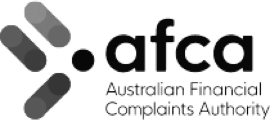Banjo recently hosted a webinar on practical ways to improve your business’ Cash Conversion Cycle. AJ Singh from ezyCollect joined us to talk about their product. However, this article discusses the practical things any business can do, regardless of which product or solution is used.
The Cash Conversion Cycle (CCC) is the capacity of a company to turn its goods and services to cash. It’s calculated by a simple formula of length of time, measured in days, for a company to convert the investments and assets in its inventory into cash generated from sales. The shorter the CCC the better.
If you are unsure what your CCC is in terms of inventory, debtor and creditor days, you can easily learn the method to calculate CCC by following steps described in The Balance. Or discuss with your accountant or advisor.
Banjo’s Andrew Colliver said that if your business is currently doing it tough, there are three basic strategies to employ:
- pivot your business by developing or sourcing new product to gain some growth;
- improve your business processes – re-map processes and rejig the business to gain efficiencies;
- reduce your costs.
Much of the second point – improving business processes – is about reducing your CCC, and getting your inventory days down. A benchmarking survey by global consulting firm PwC found the average CCC for large corporations is 37 days, while for small business it is 84 days.
How can you get that average of 84 days down to something more manageable? AJ Singh said that while there’s no silver bullet, improving your CCC is about doing many small things beautifully. Key to this is assessing the risk of your customers.
You will need access to data that will enable you to make assessments of your customers based on facts, such as their credit behaviour. Companies like ezyCollect work with credit reporting bureaux such as ilion or Dun and Bradstreet, to access data on each Australian company and calculate their risk level.
Having done a risk assessment of your customers, don’t set and forget. Continue to assess the risk regularly, and use the actionable insights gained from that assessment.
Another tactic is to get smarter with options for your customers to pay you. Data shows there is a trend to customers paying by credit card online, after 5pm. To serve this, give them one or two click options in payment methods, for example by including a Pay Now button in your email. This helps take away the friction from the process, making it easier to get paid.
According to AJ, research has shown that 30-40% of customers pay on the first 2 ‘nudges’ or reminders. The remaining 60% pay following a phone call (the 3rd or subsequent nudge). The data shows that calling is necessary and it works – so allocate time and resources to that.
At the same time it’s important to communicate with customers in a human and empathetic way. Customise the email or SMS messages you send to customers who are behind in payments. Ensure you send a message of thanks when they do pay.
According to AJ, even if a customer is going through a difficult period, it doesn’t necessarily mean you should stop working with them. It’s important to understand who the customer is, and if they are otherwise reliable, work with them on a payment plan.
Improving your CCC is an important next step in your business. If you can reduce your debtor days by as little as 10 – say from 84 to 74, this can improve your net cash position quite dramatically. You can do more in your business with that money, and gain access to more working capital.
For Banjo clients, one month’s free trial of ezyCollect is available. Contact Jason Gatt on 0434 019 725.


